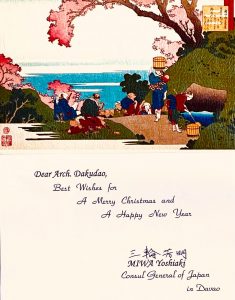
THE first ever calendar for the New Year 2022 I received is from Japanese Consul General Miwa Yoshiaki whom I haven’t seen for two years since the pandemic struck our beloved City. Like in the past years, the Japanese Consulate General’s giveaway New Year calendar has Ikebana for its theme. The featured Ikebana has a myriad of colors that resonate with the Japanese soul. The artistry in the creation of Ikebana reveals the discerning and careful awareness Japanese people have towards the foliage and flowers in season; and the various colors surrounding them. The traditional art of Ikebana which has been cultivated through history has gained a stronger presence not only in Japan but all over the world. And that Ikebana influence is quite visible even among our City’s lovely flower power ladies of Ikebana International-Davao Chapter. Even the devoted Davaoena Kadoka (followers and practitioners of Ikebana), Leticia S. Averion, published her own book on Ikebana.
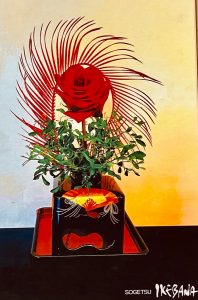
Of all of Japan’s traditional arts, perhaps the most popular and actively practiced today is Ikebana, the art of flower arrangement. While tracing its origins back for hundreds of years having taken root in a Buddhist practice in Japan as sympathy flowers for the dead, it still exists as a vital element in the contemporary world of art. It has emerged from its customary setting within the “Tokonoma” alcove of the Japanese home and has entered the modern world—the office or conference room, the hotel lobby or public square, exhibition halls, altars, to mention some. In the same way, the Ikebana is no longer the exclusive domain of the kado sensei and kadoka in Japan, but counts among its devotees professional and amateur floral designers from all over the globe and from all walks of life.
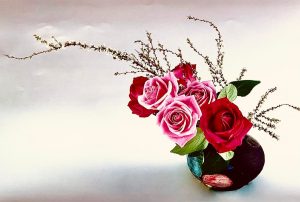
This added dimension to the use and meaning of Ikebana has in no way altered those fundamentals of structure, space and naturalism which have been developed and perfected over the centuries. The special nature of Japanese aesthetic design in the art of Ikebana reflects unique characteristics of purity, grace and quiet, valor and activity, nature, dexterity, simplicity, and reticence, among others. And do take note of the dominance of asymmetric composition in particular.
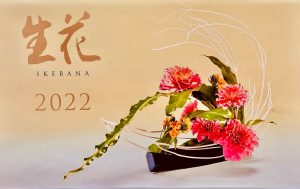
A kado sensei would always remind her students, “In basic form, an Ikebana arrangement follows a basic pattern: a triangle of three points representing Heaven, Earth and Man. Emphasis is placed on linear perfection, color harmony, space and form. If a common branch is arranged in a beautifully flowing line, it takes preference over a mass of blossoms, regardless of their beauty. Of equal importance is the sense of naturalism: an arrangement encompasses nature in all its aspects—from the tall stately pine to the lowliest blade of grass. Further, an Ikebana usually contains the foliage and flowers of the season at hand. Used in their natural state expect for the deft ‘cut’ of the kado’s clippers which perfects the line of the branch or the shape of a bud to create a visually appealing composition.”
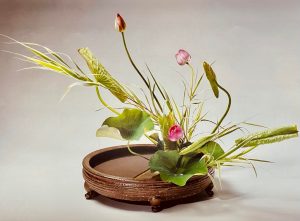
There are numerous schools of Ikebana, each following a particular set of rules and arranging techniques, but without loosing sight of the fundamentals of the art. And in keeping with the broader emphasis being given to Ikebana in its role in modern living, many of these schools seek unique and interesting expression in various forms to embody harmony, peace and beauty that reach beyond traditional styles.
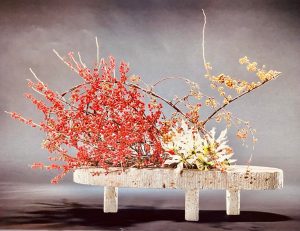
In ConGen Miwa’s New Year 2022 calendar are featured the works representing the five popular schools of Ikebana namely Ikenobo, Ohara School of Ikebana, Ko-ryu, Sogetsu, and Ichiyo School of Ikebana.

